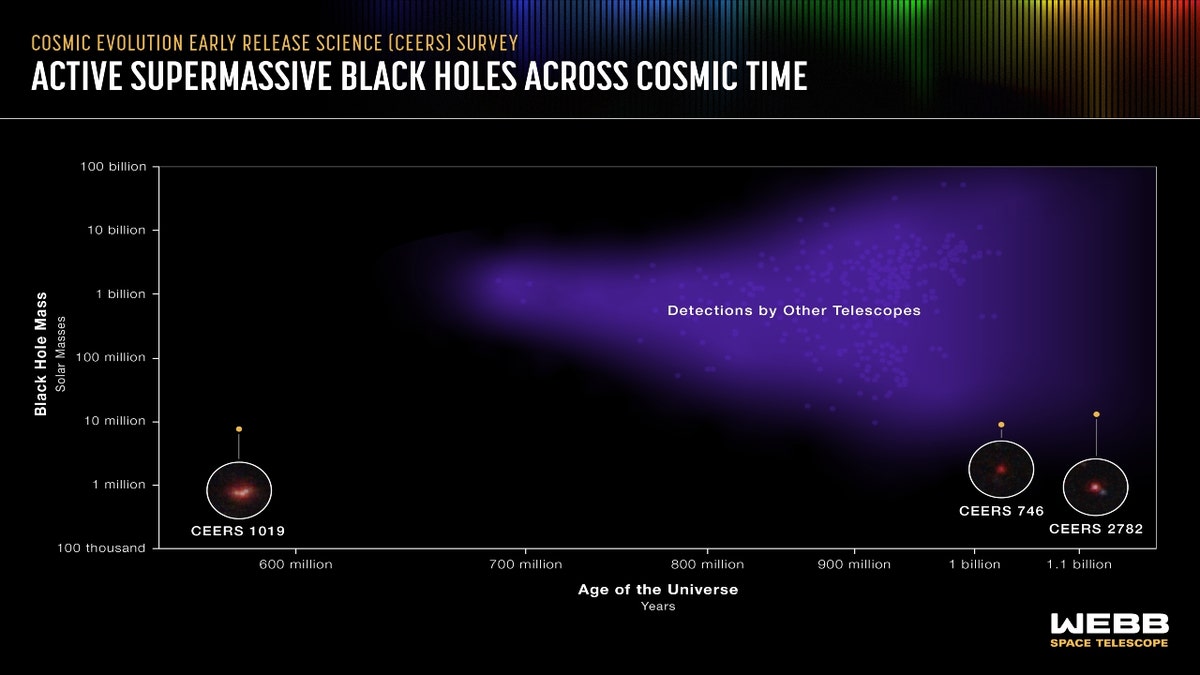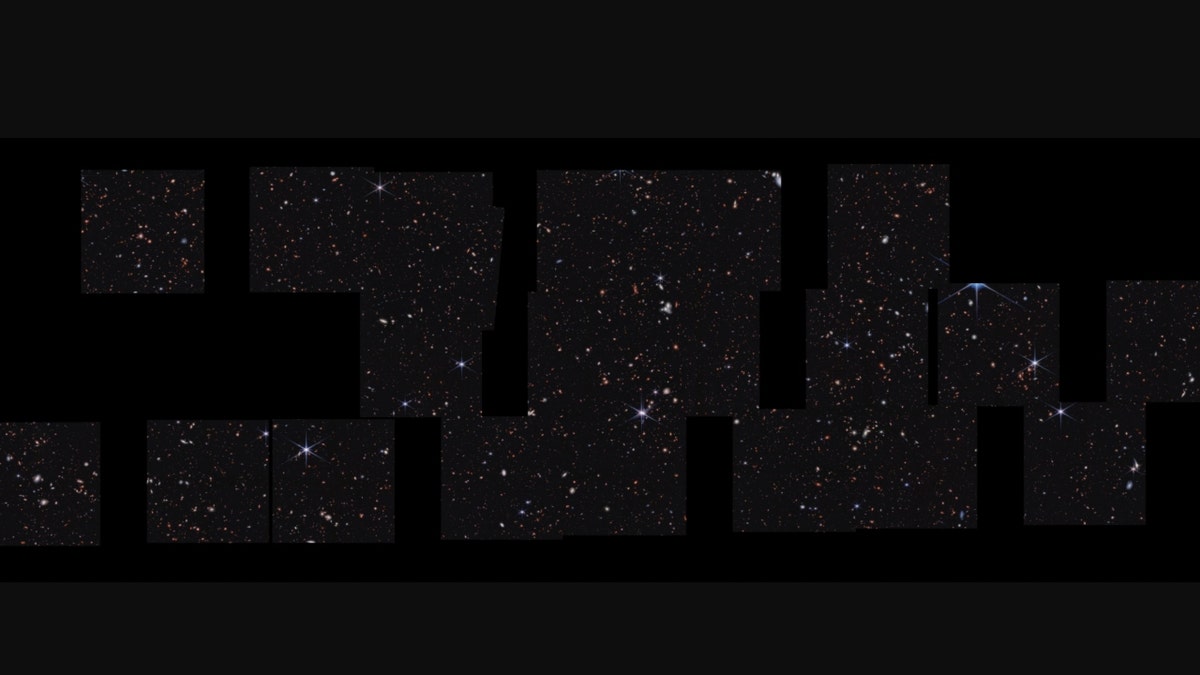The James Webb Space Telescope has peered into the distant past, uncovering the earliest known active supermassive black hole and a wealth of early galaxies, reshaping our understanding of the universe's infancy.
Located within the galaxy CEERS 1019, this black hole is significantly less massive than other early universe black holes, weighing in at around 9 million solar masses. Its relatively small size presents a puzzle for scientists, as it's challenging to explain how such a black hole formed so soon after the Big Bang.
The discovery was part of the CEERS (Cosmic Evolution Early Release Science) Survey, which leverages Webb's near- and mid-infrared capabilities to identify distant celestial objects. In addition to the record-breaking black hole, the survey also pinpointed two other smaller black holes within galaxies CEERS 2782 and CEERS 746. These findings support the theory that smaller black holes were abundant in the early universe, waiting to be detected by powerful instruments like Webb.

Furthermore, the CEERS Survey identified 11 galaxies that existed between 470 and 675 million years after the Big Bang. This discovery is surprising, as scientists initially predicted Webb would find fewer galaxies at such extreme distances. The galaxy housing the record-breaking black hole, CEERS 1019, appears to be actively consuming gas and generating new stars at a rapid pace.

These observations are transforming our understanding of the early universe from theoretical models to concrete measurements. The ability to precisely measure the properties of black holes and galaxies at such vast distances marks a significant leap forward in astronomical research. Future analysis of Webb's data promises to shed light on the formation processes of these early black holes.

This groundbreaking research, led by Steven Finkelstein of the University of Texas at Austin, demonstrates the immense power of the James Webb Space Telescope to unlock the secrets of the universe's origins.
Comments(0)
Top Comments